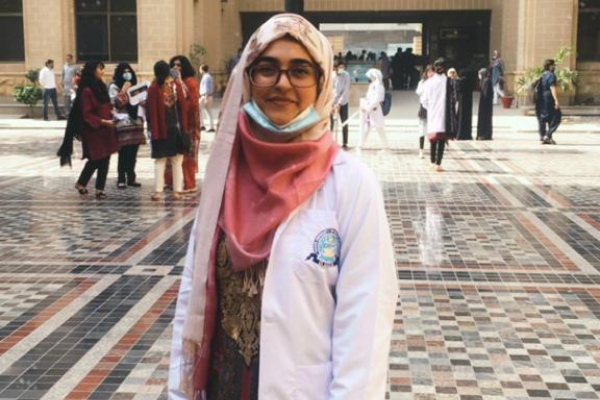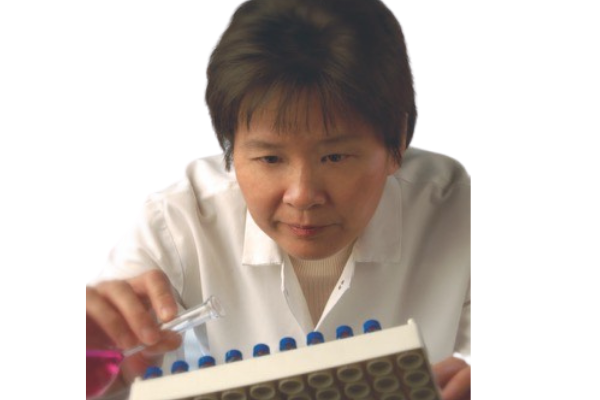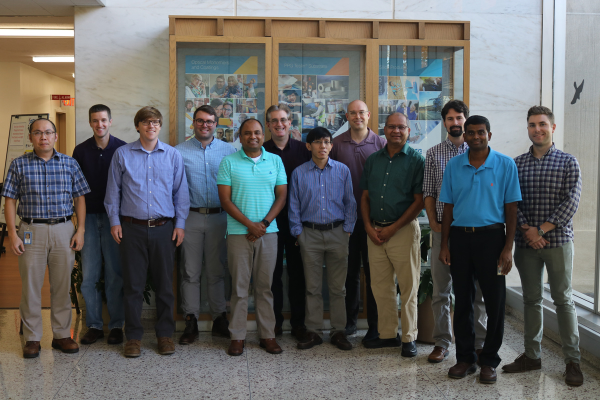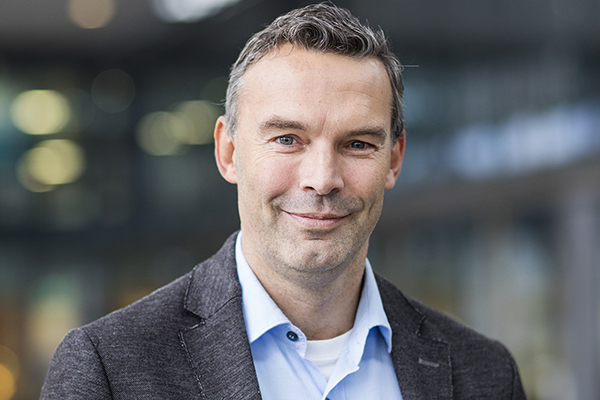By: Laura Lang
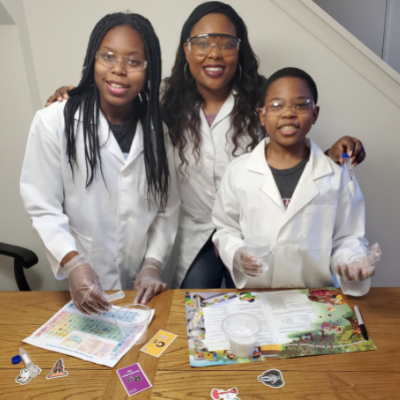
LaKesha Perry, 2021 ACS Outreach Volunteer of the Year (VOTY), is an engineering technician at the National Institute of Standards and Technology (NIST) who understands the mindset of a middle schooler is impressionable. She knows it takes a fun and engaging approach to enter that mind. It was during her own middle school years she discovered a lifelong love of STEM, a passion that’s led her to target young learners, including her own children, with simple experiments and presentations encouraging them to explore the sciences.
“STEM is an attainable career for many students and if we reach them early enough, before they’re discouraged by peers to take the ‘hard classes’ or called a ‘nerd’ if they do. We can still guide them into exciting and rewarding careers.”
Perry has more than 20 years of experience in Research & Development, Quality Control, and Scientific Instrumentation Operation. Her current research focuses on infrastructure material characterization, particularly, analytical measurements on polymeric materials in photovoltaic systems. Perry has also helped develop and publish an ASTM practice used to analyze pore solutions obtained from cementitious materials at different hydration times using an Inductively Coupled Plasma Optical Emission Spectroscopy (ICP-OES).
Early Exploration
Perry is a self-described Army brat who lived in many U.S. states and overseas in Germany during her formative years. It was during middle school science class in Brownsville (Brooklyn, NY) when she fell in love with STEM.
“My science teacher pulled me aside and said she thought I had the right mind for STEM,” says Perry. “I competed on the middle school and high school math teams and entered an environmental science competition, which I won.”
She moved to a magnet high school in Maryland where she took AP STEM courses. “That was when I realized I wanted to go to college and major in one of the STEM disciplines, I just had to decide if I wanted to continue with physics or change to chemistry.”
Next Steps
Perry considered several colleges but in the end chose North Carolina Agricultural and Technical State University since it had a good engineering program and moved her closer to family.
Before accumulating enough credits to graduate she moved back to Maryland and realized that few of her credits would transfer unless she finished an associate’s degree, which guarantees acceptance in state-run four year universities. She enrolled in Prince George’s Community College and finished her associate’s degree in chemistry with a 4.0 GPA. At the same time she began working at the FDA and was offered a full scholarship to attend Towson University.
That’s when she had her daughter, now 14, and had to cut back on her class load while continuing with her full-time FDA job. Four years later she had her son, now 10. She worked briefly at the Department of Transportation’s call center before joining the Federal Highway Administration as a chemist technician. “I raised both of my children while working in a laboratory full time and finishing my bachelor’s degree in chemistry one class at a time,” she says.
At the FHWA she learned how to use sophisticated lab equipment for testing asphalt binders, concrete, and mixtures according to ASTM and AASHTO standards or special non-standard procedures. “Any time we received new equipment, I was trained on it, so I could train other staff,” she says. And indeed, she trained her peers at many agencies including NIST, where she was hired in 2015.
She published several papers and gave many presentations, including presenting work in both inorganic chemistry related to dissolution rates of gypsum and organic chemistry pertaining to accelerated UV photodegradation of high density polyethylene at an ACS National meeting, which brought her into contact with Allison Aldridge, PhD. Dr. Aldridge shared opportunities for mentoring and outreach through the Chemical Society of Washington, the local ACS section for the Washington DC area. She was hooked.
Community Involvement
Perry had been active with ACS even as an undergrad as the organization’s outreach and mentoring meshed well with her desire to give back and help others. She volunteered for two years as the secretary of Chemical Society of Washington (CSW), and then became a local section councilor participating in hands-on demonstrations and working with younger students. Her own children often attended the events and helped her “keep it fun.”
In fall 2019, Perry hosted a successful CSW Pump-Chem Patch Festival that had many “Marvelous Metals” National Chemistry Week-related activities. “It will be great to bring those types of large in-person events back now that COVID-19 restrictions are easing,” she says. Most recently, Perry was recently recognized as an ACS Outreach Volunteer of the Year and is president-elect of the CSW.
What’s Next?
As president of CSW, she’ll be more engaged in all of the committees and is already planning a fall event for students featuring Dr. Malika Grayson, author of “Hooded: A Black Girl's Guide to the Ph.D.” She’ll also be focusing on programming to engage more federal scientists and practitioners with CSW and working toward her own master’s degree.
“There’s so much to do to make sure we’re talking to every student, and exposing them to what’s possible through STEM careers,” she says. “I think the way I grew up, moving around and being exposed to different cultures, and experiencing some racism in the South, has made this very important to me and something I really believe in.”
Copyright 2021 American Chemical Society (All Rights Reserved)

